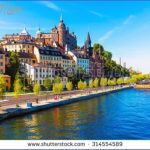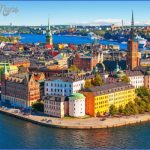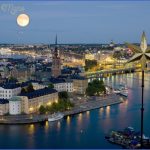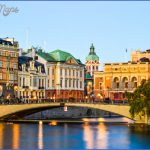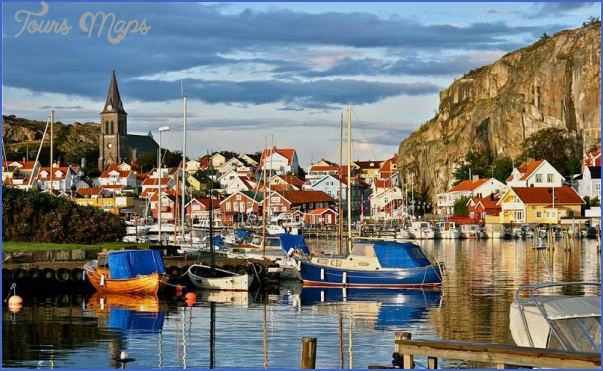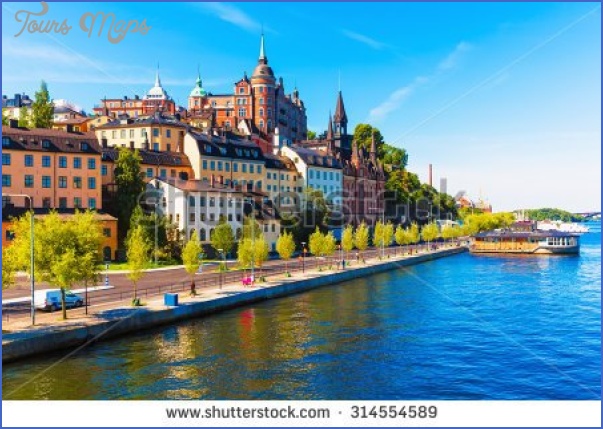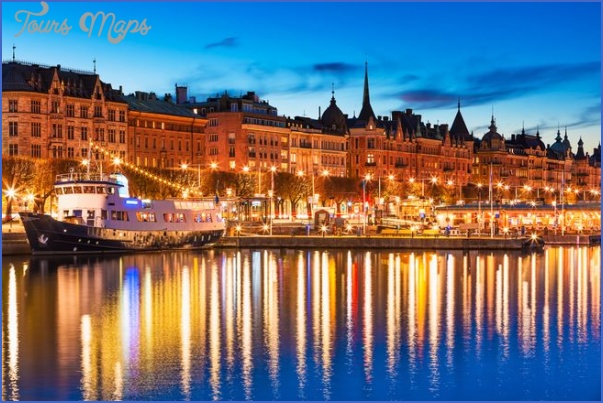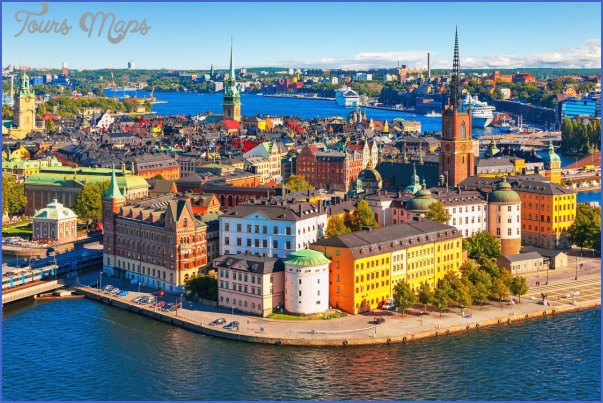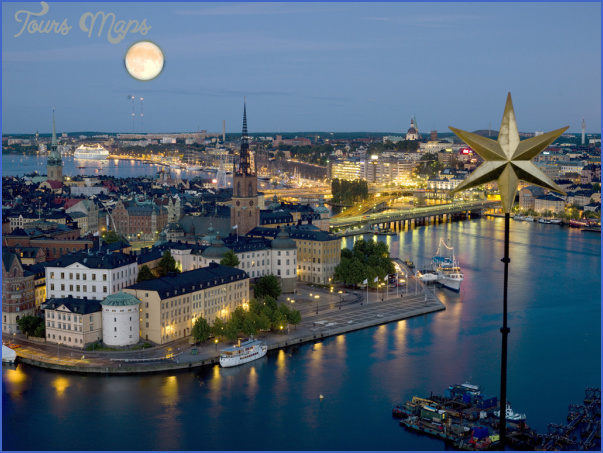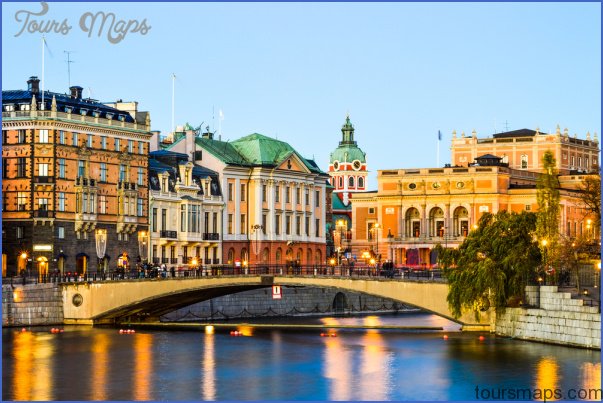SWEDEN is one of the most prosperous nations in the world, and in social terms is perhaps the most progressive. This is the result of a long period of peace which allowed a slow but steady advance and of the country’s abundance of mineral resources and water power, which provided the basis for an early and rapid development of industry.
Sweden has large deposits of iron ore in Lapland with a 60-70% iron content as well as zinc, lead, pyrites, copper, manganese, silver and gold. The coalfields in western Skane, now depleted, led to the development of industries in that region which must now use imported coal. New hydroelectric power stations are being built in northern Sweden, but with the demand for power continually rising, it is necessary to import electricity from Norway. There is controversy over the use of nuclear power (Sweden has at present eight reactors). The main industrial activity is in the metal-processing, particularly the manufacture of machinery, motor vehicles, aircraft and shipbuilding, followed by the manufacture of timber products, paper and cellulose, glass, textiles and foodstuffs.
Agriculture in Sweden is of subordinate importance, although efforts are being made to develop a substantial measure of self-sufficiency. Barely 10% of the country’s area is suitable for cultivation primarily the low-lying regions in southern and central Sweden which are devoted to the growing of corn, sugar-beet and, increasingly, vegetables. Farther north, as a result of the climatic conditions, arable farming gives place to stock-farming, which in Lapland is confined to reindeer herding. The drift of population from the land continues, but is compensated by the adoption of more efficient farming methods and an increase in the size of holdings.
More than half the country is covered by coniferous forest, at altitudes above 500 m (1650ft), in the north by birches, and in the south also by mixed forest. The resources of the forests are very far from being fully exploited, since new growth still exceeds felling; but the fierce competition in world markets appears for the present to stand in the way of further expansion.
Swedish fisheries in the North Sea and the Baltic are of no more than regional importance. The fish are sold fresh on the domestic market.
Much attention has been devoted in Sweden to the development of the country’s communications. It has long had a high proportion of motor vehicles to population, and has excellent roads reaching far into the north of the country. The railway system has been reduced in recent years bytheclosing of certain lines. Coastal shipping is of great importance to trade with Sweden’s Baltic neighbours, and the country’s main concentrations of industry lie around the great ports of Gothenburg, Stockholm, Helsingborg and Malmo.
The principal airports are Arlanda and Bromma (for Stockholm), Torslanda, Gothenburg (Goteborg) and Bulltofta (Malmo).
Swedish glass
Sweden’s principal trading partner is West Germany, followed by Britain, Norway, Denmark, the United States, Finland, Holland, France, Belgium and Luxembourg, Italy and the Soviet Union. The main exports are finished products, particularly machinery, ships and motor vehicles (which together account for 40% of total exports), followed by paper, timber and cellulose products (1 5-20%). The principal imports are raw materials (coal, oil).
Sweden is a member of the European Free Trade Association (EFTA), and has a customs agreement with the EEC.
The Swedish economy, like that of other countries, has suffered from the recession brought on by the general shortage of oil and power supplies; but future prospects, with high inflation but relatively low unemployment, can be regarded with cautious optimism.
SWEDEN Photo Gallery
Maybe You Like Them Too
- The Best Cities To Visit in The World
- World’s 10 Best Places To Visit
- Coolest Countries in the World to Visit
- Travel to Santorini, Greece
- Map of Barbados – Holiday in Barbados


